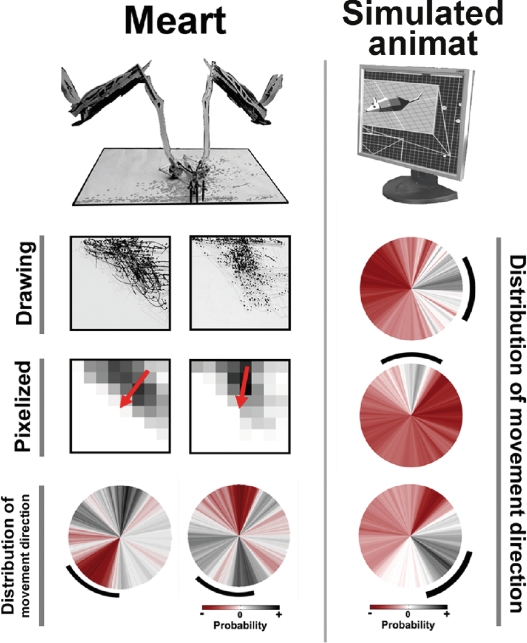Figure 7.
Plastic changes in MEART and animat behavior. Unsuccessful and successful training of goal-directed animat behavior. MEART. Training with predetermined PTS caused a shift in the probability distribution of commanded movement directions in two experiments (circles, bottom row), but in an uncontrolled manner. Marks first accumulated on a side of the drawing's workspace (CCD camera image of the drawing and pixelized feedback), but successful PTS training should shift the markings back toward the center (red arrow middle row; black arc bottom row). The probability distribution of movement directions during 10 minute at the start of 2 hour experiments was subtracted from that during the final 10 minute, thus allowing negative values (red). Simulated animat. Iteratively updating the probability of selecting a given PTS for training allowed an animat to learn to move in multiple directions (circles; see Methods: Making the Semi-Living Artist). Desired angles of 0, 90, and −45 degrees (black arcs) were applied in consecutive 2 hour periods. Successful behavior was considered to be movement within the desired angle ±30 degree. Notice the changes in probability distribution of movement direction were now more likely to be in the appropriate direction and more focused than for MEART.

